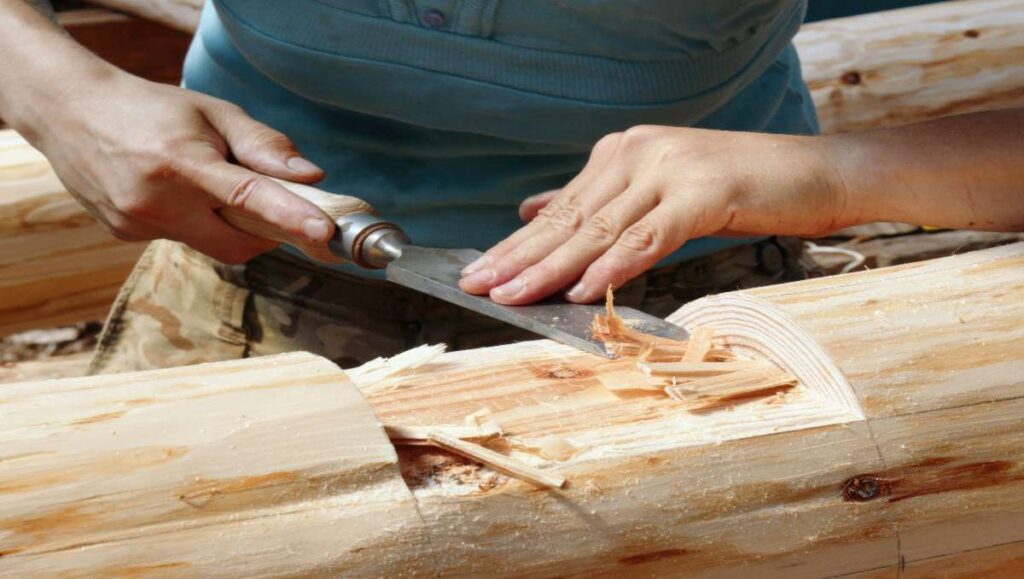
Amish furniture transports you to a simpler era, where craftsmanship was revered and quality was paramount. But beyond its undeniable beauty and charm lies a deeper question: Is Amish furniture ethical?
Amish furniture is considered ethical due to the traditional craftsmanship techniques employed by the Amish community. Known for their commitment to simplicity, quality, and sustainability, Amish craftsmen utilize hand tools and locally sourced materials to create durable and timeless pieces.
This article will delve into Amish sourcing practices, labor conditions, environmental considerations, consumer transparency, certifications, and more. We will also unravel the tapestry of ethical values woven into every piece of Amish craftsmanship.
Understanding Amish Craftsmanship
Amish furniture is known for its exceptional craftsmanship and attention to detail, which stems from a rich woodworking tradition. The Amish have been honing their skills for generations, passing down techniques and knowledge through apprenticeships within their tight-knit communities.
Overview of Amish Woodworking Traditions
Understanding the techniques employed by the Amish is essential in appreciating their cultural significance and the beauty of their traditional designs.
The Amish rely on hand tools, such as saws, chisels, and planes, to create furniture pieces. This emphasis on manual labor reflects their dedication to simplicity and allows for a more intimate connection between craftsman and creation.
Furthermore, regional variations in woodworking styles can be found among different Amish communities, adding depth to their rich heritage. Whether it’s the elegant curves of Lancaster County or the bold lines of Ohio’s Holmes County, each piece tells a story of commitment and pride in preserving this age-old craft.
Handmade Craftsmanship and Attention to Detail
Crafted with precision and a meticulous eye for detail, each piece of Amish woodworking showcases the artisans’ commitment to creating timeless beauty. The handmade craftsmanship and attention to detail are evident in every aspect of their work.
From hand-carved designs to carefully selected wood, the Amish take pride in their ability to create functional and beautiful furniture.
Quality control is a top priority for the Amish artisans. They believe in using traditional techniques and artisanal skills passed down through generations. This ensures that each piece meets their high standards of excellence.
The Amish value authenticity and simplicity, reflected in their woodworking style. They embrace minimalism and avoid unnecessary embellishments, allowing the natural beauty of the wood to shine through.
By choosing Amish furniture, you’re supporting local artisans and investing in a piece that will last for generations. Handmade craftsmanship, attention to detail, and quality control guarantee that your furniture will be a cherished heirloom for years to come.
Historical Context of Amish Furniture Production
When you think about the historical context of Amish furniture production, it’s fascinating to see how their traditional techniques have been passed down through generations. The understanding of craftsmanship and woodworking traditions is deeply ingrained in their culture.
From the careful selection of materials to the meticulous handmade attention given to each piece, Amish furniture embodies a sense of pride and heritage. Sourcing materials is integral to their process, focusing on sustainable practices and responsible wood sourcing. This commitment ensures that every piece showcases exceptional skill and respects the environment.
By cherishing these time-honored methods, the Amish create furniture that connects us to our past while providing a lasting symbol of quality and authenticity for those who desire to belong in a world filled with mass-produced items.
Sourcing of Materials and Sustainability
When sourcing materials, Amish craftsmen prioritize using locally sourced wood. They believe in supporting their local community and reducing the carbon footprint associated with transportation.

In terms of manufacturing methods, the Amish adhere to traditional techniques that emphasize hand craftsmanship and attention to detail. This ensures a high level of quality and durability in their furniture pieces.
Wood Sourcing
The ethical sourcing of wood for Amish furniture ensures sustainable practices are in place. Wood certification is vital in guaranteeing that the materials used for crafting Amish furniture are responsibly sourced.
By obtaining certifications such as Forest Stewardship Council (FSC) or Sustainable Forestry Initiative (SFI), the Amish community demonstrates its commitment to environmental stewardship and responsible logging practices.
These certifications ensure that the wood used comes from forests managed with sustainable techniques, preserving biodiversity and protecting ecosystems. Furthermore, local sourcing significantly reduces carbon emissions associated with transportation while supporting the local economy.
The Amish prioritize working closely with local suppliers who share their values and commitment to sustainability.
Manufacturing Methods
Crafting Amish furniture involves using traditional techniques passed down through generations, creating pieces that embody the timeless beauty and artistry of skilled craftsmanship. The understanding and utilization of these conventional methods are what set Amish furniture apart from mass-produced alternatives.
Each piece is carefully crafted by hand, showcasing the craftsmanship skills honed over many years. This attention to detail ensures that every item meets the highest quality control standards.
In addition to the dedication to traditional techniques, ethical sourcing is crucial to Amish furniture manufacturing. The wood used to craft these pieces is sourced responsibly, often from local forests or sustainable suppliers. This commitment to ethical sourcing helps protect the environment, supports local communities, and promotes sustainability.
Labor Practices and Fair Wages
In discussing labor practices and fair wages within the context of sourcing materials and sustainability, it’s important to consider community-based workshops as a key point.

Community-Based Workshops
Community-based workshops are a hub of creativity and collaboration, where Amish artisans come together to bring their unique skills to life through beautiful handmade furniture. These workshops foster community engagement by providing a space for individuals to connect and share their expertise.
Experienced artisans pass down traditional techniques to younger generations through skill sharing, ensuring cultural preservation and continuity. Moreover, these workshops contribute to the local economy by creating jobs and supporting small businesses.
By purchasing Amish furniture made in community-based workshops, consumers can have a sense of social responsibility as they support fair labor practices and contribute directly to the livelihoods of skilled craftsmen.
Apprenticeship System and Skill Preservation
The rich history and cultural significance of the apprenticeship system, where skilled artisans pass on their expertise to younger generations, ensures the preservation of traditional craftsmanship.
The apprenticeship benefits both the mentors and apprentices alike. Through this system, artisanal skills are taught and nurtured, allowing for a deep understanding of the techniques involved in creating Amish furniture. This passing down of generational knowledge is essential for cultural preservation as it ensures that traditional methods are preserved over time.
The apprenticeship system allows for hands-on learning experiences where aspiring craftsmen can learn from seasoned professionals. They know intimately about each step in crafting furniture, such as wood selection, joinery techniques, and hand-finishing methods. They develop a strong foundation in these traditional techniques by working closely with their mentors.
The apprenticeship system plays a vital role in maintaining Amish furniture-making’s authenticity and ethical nature by ensuring that these skills continue to be passed down through generations.
Environmental Impact
Reduce your carbon footprint by choosing Amish furniture, as their handcrafted pieces are made from sustainably harvested wood and do not contribute to deforestation.

Environmental sustainability is a crucial aspect of Amish furniture production. Unlike mass-produced furniture that often relies on clear-cutting forests, the Amish deeply respect nature and prioritize using renewable resources. They carefully select trees for harvesting, ensuring the longevity and health of the forest ecosystem.
Deforestation significantly impacts our planet, leading to habitat destruction, loss of biodiversity, and increased greenhouse gas emissions. By opting for Amish furniture, you are actively contributing to the preservation of forests worldwide.
The waste management practices employed by the Amish also minimize environmental harm. Any leftover wood or sawdust is repurposed or used for heating homes.
Amish craftsmen take pride in their workmanship and attention to detail, producing high-quality furniture that lasts generations. This longevity reduces the need for frequent replacements, further minimizing waste and reducing your overall carbon footprint.
Choosing Amish furniture allows you to enjoy beautifully handcrafted pieces and aligns with your values of environmental responsibility.
Consumer Transparency and Traceability
When it comes to consumer transparency and traceability, consider the direct relationships that companies have with artisans. This allows for a more personal connection between the consumer and the product maker, ensuring that ethical practices are followed.
Additionally, certifications and responsible sourcing initiatives can reassure consumers that the products they’re purchasing meet specific standards and have been sourced in an environmentally friendly manner. These measures contribute to a more transparent supply chain and empower consumers to make informed purchase decisions.
Certification and Responsible Sourcing Initiatives
Make sure to check for certifications and responsible sourcing initiatives when shopping for furniture, as they can assure that the products you’re purchasing are ethically and sustainably produced.
Certification programs and responsible sourcing initiatives ensure ethical manufacturing practices and transparent supply chains within the Amish furniture industry. These programs often require manufacturers to adhere to strict standards, including sustainable practices such as using locally sourced materials and minimizing waste.
By choosing certified or sourced furniture responsibly, you’re supporting artisans who prioritize ethical production methods while promoting environmental sustainability. Moreover, these initiatives contribute to improving working conditions for artisans.
So, take the time to research and look out for certification labels or information on responsible sourcing when making your next furniture purchase.
Certification and Standards
To fully appreciate the ethical aspects of Amish furniture, you can rely on certifications and standards that ensure its authenticity and sustainable practices. Certification standards are crucial in promoting responsible sourcing and consumer transparency within the industry. These certifications assure that the furniture has been produced using environmentally friendly methods and adheres to fair labor practices.
One significant aspect of Amish furniture is its community-based workshops. These workshops are often small, family-run businesses where craftsmanship is passed down through generations. The apprenticeship system ensures that skills are taught and honed with care, fostering a sense of tradition and quality craftsmanship.
Regarding certification, organizations like the Forest Stewardship Council (FSC) verify that wood used in Amish furniture comes from responsibly managed forests. This means that trees are harvested sustainably, preventing deforestation and protecting wildlife habitats.
In addition to wood certification, other standards such as Fair Trade or GreenGuard can also be applied to ensure social responsibility and low chemical emissions in the production process. Amish furniture manufacturers demonstrate their commitment to ethical practices by adhering to these certifications and standards.
Challenges and Considerations
When considering the challenges and considerations of Amish furniture, it’s essential to acknowledge the varying practices among different Amish communities. Each community may have its standards and methods for producing furniture, which can impact the overall quality and ethical practices involved.

Varying Practices Among Amish Communities
Although Amish communities share a common foundation, their varying practices create a rich tapestry of ethical furniture production.
The historical context of each community influences their approach to sourcing wood, labor practices, and the environmental impact of their furniture-making process.
Some communities may prioritize sustainable forestry and use locally sourced wood, while others may rely on reclaimed or salvaged materials.
Labor practices also vary among Amish communities, with some emphasizing traditional craftsmanship by hand while others incorporate modern tools and machinery.
Environmental impact is also considered differently, with some communities implementing eco-friendly practices such as using natural finishes or minimizing waste.
Understanding these varying practices allows consumers to make informed choices that align with their values when purchasing Amish furniture.
Higher Price Point
Considering the higher price point, investing in Amish furniture is worthwhile due to its exceptional craftsmanship and quality materials. Ethical considerations play a significant role when determining the pricing factors of Amish furniture.
The Amish community takes pride in their traditional way of living, which includes sustainable practices and respect for nature. This commitment to ethical values translates into the production process of their furniture, ensuring that only environmentally friendly materials are used.
Moreover, the meticulous attention to detail and quality assurance guarantees that each piece is built to last for generations.
Consumer perception of Amish furniture as an investment rather than a disposable item further justifies its higher price point. The market demand for well-crafted and ethically sourced products has been steadily increasing, making Amish furniture a desirable choice for those seeking functionality and sustainability in their homes.
The Bottom Line
Amish furniture offers a unique blend of craftsmanship and ethical practices. The Amish community strives to create furniture that is not only beautiful but also environmentally conscious. They focus on sustainable sourcing and fair labor practices.
One interesting statistic to consider is that over 90% of materials used in Amish furniture are sourced locally, reducing the carbon footprint associated with transportation. This commitment to sustainability sets Amish furniture apart and provides consumers with a transparent and ethically sound choice for their home furnishings.
